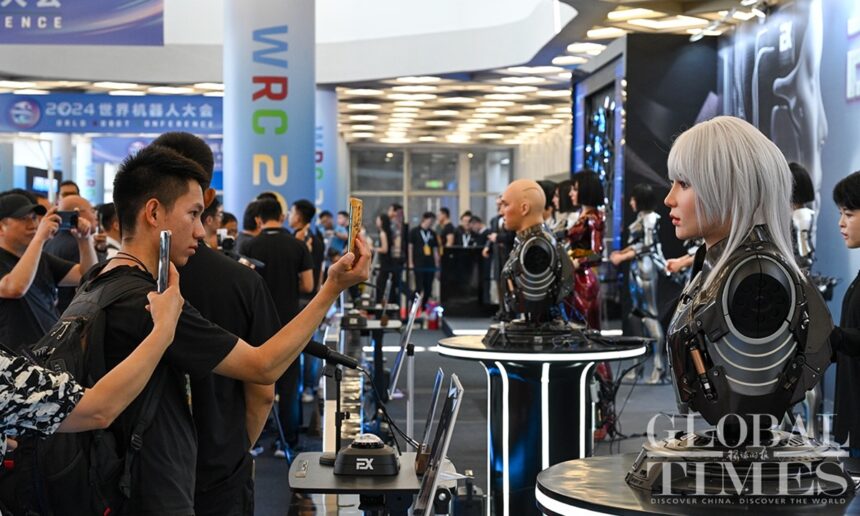At the entrance of the World Robot Conference 2024 in Beijing, a young boy confidently pointed at a humanoid robot, identifying it as human due to its “false eyelashes.” This playful interaction highlights the remarkable advancements showcased at the event, where robots closely mimic human features, blurring the line between man and machine.
The humanoid robots displayed in Beijing stand in stark contrast to those featured at the World Artificial Intelligence Conference in Shanghai earlier this year. These robots are designed with an astonishing level of detail, replicating human skin, facial expressions, and even movements with impressive accuracy. Many are similar in height and weight to humans, with models ranging between 1.7 and 1.8 meters tall.
Industry experts are heralding 2024 as the “year zero” for the practical application of humanoid robots. This year marks the beginning of mass production and commercial deployment, as robots transition from high-tech labs to industrial environments and, eventually, into households.
One notable participant, China’s Zhejiang Humanoid Robot Innovation Center, introduced their NAVIAI robot at the conference. NAVIAI captivated audiences with its ability to deliver speeches, make tea, and play chess, all with smooth and lifelike movements. Standing 1.65 meters tall and weighing 60 kilograms, NAVIAI is designed to closely resemble a human, enhancing its approachability and usability.
Other innovative robots at the event included the Astribot S1, capable of folding clothes and frying waffles, and Unitree Technology’s H1-2, which is already replacing human workers in factory assembly lines. Additionally, Wanda, a wheeled dual-arm humanoid robot developed by UniX AI, showcased its kitchen skills, highlighting its potential as a home service robot.
Tesla’s Optimus humanoid robot also made its debut in Beijing, showcasing significant improvements, including a 30% increase in walking speed and enhanced tactile functions in its fingers. The robot has been undergoing battery sorting training at Tesla’s factory, and over 1,000 units are expected to be deployed next year.
Industry leaders predict that humanoid robots will gradually enter various industries within the next 3-5 years and become household fixtures in the next 5-10 years. However, experts caution that it will take at least 5-8 years for these robots to develop the intelligent decision-making capabilities required for complex home environments.
By 2025, China aims to establish a robust humanoid robot innovation system, achieving breakthroughs in core technologies and reaching international advanced levels in mass production, according to the Ministry of Industry and Information Technology.
In his opening address at the World Robot Conference, Qiao Hong, President of the World Robotics Organization, emphasized the importance of core components such as high-torque motors, high-performance chips, and long-lasting batteries in building stable and high-performance humanoid robots. He also highlighted the role of artificial intelligence technologies in enabling these robots to adapt to various tasks and environments.
As the world enters this new era of robotics, the innovations showcased at the World Robot Conference 2024 signal a future where humanoid robots are no longer confined to the realm of science fiction but are becoming a tangible part of everyday life.

